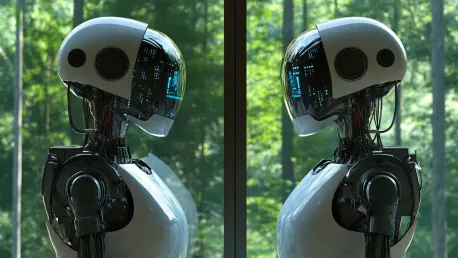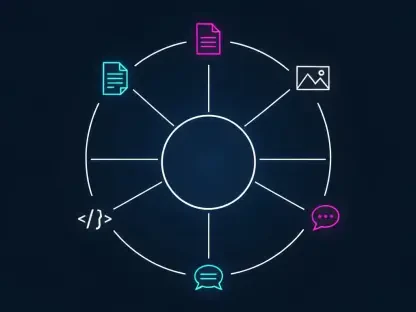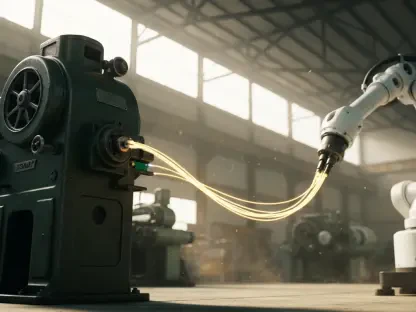The rapid evolution of artificial intelligence (AI) and automation technologies is fundamentally transforming the robotic software market. These changes are leading to enhanced capabilities and new applications across diverse industries. As AI and machine learning (ML) continue to advance, the potential for more intelligent, adaptive, and efficient robotic software is becoming a reality. Companies are now able to deploy intelligent robotic systems that can learn from their environments and make autonomous decisions, pushing the boundaries of what these technologies can achieve in various sectors.
AI and ML: The Driving Forces
Artificial intelligence and machine learning have emerged as primary catalysts in the evolution of robotic software. These technological advancements enable robots to process extensive data sets, learn from diverse environments, and make autonomous decisions. The ability to adapt and improve through machine learning is revolutionizing industries such as manufacturing, healthcare, and logistics. ML algorithms are allowing robots to perform tasks with increasing precision and accuracy, while innovations in AI are leading to the development of new functionalities in robotic software, making them more versatile and capable of handling complex tasks previously unattainable through traditional programming methods.
As AI and ML technologies progress, robotic systems are becoming more efficient and effective at a broader range of tasks. In manufacturing, for instance, robots equipped with AI can predict system failures before they happen, leading to reduced downtime and increased productivity. In healthcare, robotic software utilizing AI aids in accurate diagnosis and personalized treatment plans for patients. The logistics industry reaps benefits from AI by optimizing routes and handling inventory with a degree of accuracy and efficiency beyond human capabilities. This revolution in robotic software, driven by AI and ML, sets the stage for unprecedented advancements and applications across multiple sectors.
Industrial Automation and Efficiency
The pursuit of operational efficiency and cost reduction is driving the widespread adoption of industrial automation. Many sectors, including automotive, electronics, and aerospace, are integrating robotic software into their production lines to maintain competitive edges. Automation minimizes human intervention in repetitive tasks, ensuring consistency and higher production rates. In these highly competitive industries, robotic software enhances quality control and lowers production costs, creating a more streamlined and effective manufacturing process. The integration of AI-powered robotic software in automation is not only optimizing workflows but also setting new standards for operational efficiency that were previously unattainable.
In the automotive industry, for example, robots equipped with advanced software perform intricate tasks such as welding and painting with extreme precision, leading to higher-quality products and fewer defects. The electronics sector utilizes robotic assemblies to handle delicate components with accuracy impossible to achieve manually, significantly reducing errors and waste. Aerospace companies leverage AI-driven robotics to conduct meticulous inspections and maintenance, ensuring the utmost safety and reliability. As these industries continue to harness the power of automated robotic software, the resulting efficiencies drive down costs and increase production capacity, solidifying their positions in global markets.
Healthcare Transformation
The healthcare industry is at the forefront of embracing robotic software in various applications such as surgical robotics, telemedicine, and rehabilitation. AI-driven robotic surgery systems bring unprecedented precision to surgical procedures, improving patient outcomes and reducing associated risks. These advanced systems allow surgeons to perform minimally invasive surgeries with enhanced control and accuracy, leading to faster recovery times and lower complication rates. Beyond surgery, AI-powered robots are revolutionizing drug discovery, medical imaging analysis, and patient monitoring. The integration of these advanced technologies in healthcare signifies a paradigm shift toward more efficient and effective medical practices that prioritize patient well-being.
In drug discovery, AI-driven robots accelerate the identification of potential compounds and streamline the development process, reducing the time it takes to bring new medications to market. Medical imaging analysis benefits from AI algorithms that can detect anomalies with high accuracy, leading to earlier diagnosis and treatment of diseases. Patient monitoring systems powered by AI can provide real-time health data and predictive analytics, enabling proactive healthcare management and improving overall patient outcomes. The healthcare sector’s adoption of robotic software is not only enhancing existing practices but also fostering innovation and breakthroughs that promise to transform the industry fundamentally.
E-commerce and Logistics Revolution
The rise of e-commerce has intensified the demand for automated logistics solutions, prompting companies like Amazon and FedEx to invest heavily in robotic software to automate warehouses, manage inventory, and optimize last-mile deliveries. Autonomous mobile robots (AMRs) and robotic process automation (RPA) software are becoming essential tools in logistics centers, ensuring faster and more cost-effective order fulfillment. The integration of robotic software in logistics addresses the growing demands of the e-commerce sector by improving efficiency and reducing operational costs significantly. Companies leveraging these technologies are better positioned to meet customer expectations and maintain a competitive edge in the rapidly evolving market.
In warehouses, robotic systems equipped with AI can efficiently sort and transport goods, minimizing manual labor and reducing the risk of human error. Inventory management is streamlined through sophisticated algorithms that track stock levels and predict demand, ensuring optimal inventory levels are maintained. Last-mile delivery, a critical component of logistics, is being revolutionized by autonomous delivery robots that navigate complex urban environments and deliver packages directly to customers’ doorsteps. The automation of supply chains through advanced robotics not only enhances operational efficiency but also enables businesses to scale and adapt to the fluctuating demands of the e-commerce landscape.
Emerging Market Segments
Robotic process automation (RPA) is gaining significant traction for automating rule-based tasks such as data entry, customer service, and compliance management. Adopting RPA solutions enhances operational efficiency, reduces human error, and provides substantial productivity gains across various industries. AI-powered robotic software that executes complex cognitive functions is proving invaluable in customer service, financial services, and intelligent manufacturing. By automating repetitive and monotonous tasks, businesses can focus on higher-value activities that drive growth and innovation.
The deployment of cloud-based robotic software offers scalable, cost-effective, and secure automation solutions, allowing businesses to access and manage their robotic systems remotely. This flexibility is particularly attractive to enterprises seeking to adapt quickly to changing market conditions without incurring significant infrastructure costs. Embedded robotic software, which is integrated into hardware systems, ensures real-time decision-making and precision in applications like industrial automation, medical robotics, and military operations. These emerging segments of the robotic software market demonstrate the diverse applications and significant impact of automation technologies across various fields.
As the demand for robotic software continues to grow, these emerging market segments highlight the need for robust and adaptable solutions that can meet the specific requirements of different industries. Companies investing in AI-powered, cloud-based, and embedded robotic software can unlock new opportunities for efficiency, innovation, and competitiveness. The continued adoption and advancement of these technologies are set to reshape the global market landscape, driving sustainable growth and fostering a new era of automation-driven business practices.
Overcoming Challenges
Despite the promising growth prospects, the robotic software market faces several challenges that must be addressed to ensure sustainable progress. One of the primary barriers to widespread adoption is the high initial investment costs associated with deploying advanced robotic systems. Small and medium-sized enterprises (SMEs) often struggle to allocate the necessary resources for such advancements, necessitating the development of financially sustainable solutions and flexible pricing models. By providing scalable options and tiered pricing structures, technology providers can make robotic software more accessible to a broader range of businesses, fostering wider adoption and long-term market growth.
Cybersecurity threats pose another critical challenge to the robotic software market, as the interconnectedness of robotic systems through the Internet of Things (IoT) and cloud platforms exposes them to potential cyber-attacks. Implementing robust cybersecurity measures, including encryption, authentication, and real-time monitoring, is paramount to safeguarding these systems against such risks. As robotic software becomes more integral to various industries, ensuring the security and integrity of these systems is essential to maintaining trust and reliability. Investing in comprehensive cybersecurity strategies will mitigate risks and protect sensitive data, enabling businesses to confidently integrate robotic software into their operations.
Skill Development and Workforce
The increasing reliance on robotic software underscores the necessity for a skilled workforce proficient in AI, machine learning, and robotic programming. Bridging the skills gap through specialized training programs and academic collaborations is essential for sustainable growth in this market. Educational institutions and industry leaders must work together to develop curricula that address the specific needs of the robotic software industry, ensuring that the future generation of professionals is well-equipped to handle the challenges and opportunities presented by these advanced technologies.
A well-trained workforce will not only support the current demands of the robotic software market but also drive innovation and further advancements. Encouraging continuous learning and professional development within the industry will help maintain a competitive edge and foster a culture of innovation. By investing in skill development initiatives, businesses can ensure a steady pipeline of talent capable of pushing the boundaries of what robotic software can achieve, driving the industry towards new heights of success.
Opportunities in Emerging Markets
The rapid progression of artificial intelligence (AI) and automation technologies is dramatically reshaping the robotic software market. These advancements are contributing to improved capabilities and the development of new applications across a variety of sectors. As AI and machine learning (ML) technologies continue to evolve, the possibility of creating more intelligent, adaptive, and efficient robotic software is becoming increasingly feasible. Companies are now capable of deploying sophisticated robotic systems that can learn from their surroundings and make autonomous decisions, pushing the limits of what these technologies can accomplish in different industries. From manufacturing and healthcare to logistics and beyond, the impact of these intelligent systems is profound. Businesses are leveraging these advanced robots to optimize operations, reduce costs, and improve overall efficiency. The fusion of AI and robotics is not only transforming existing processes but also paving the way for new innovations and opportunities. As these technologies continue to advance, the future of the robotic software market looks exceedingly promising, with vast potential waiting to be unlocked.









